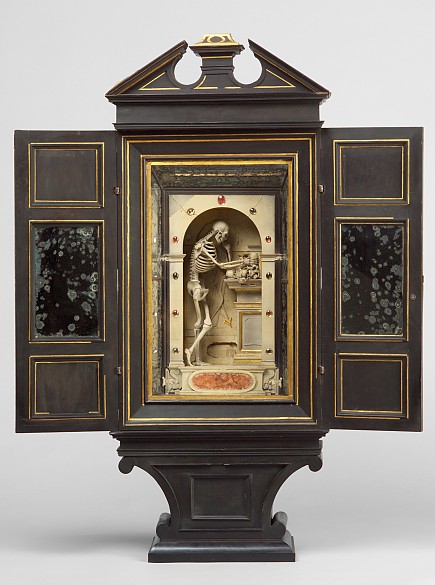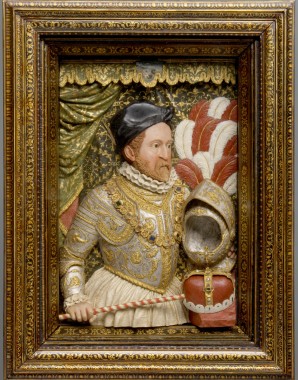Tödlein-Schrein, c. 1580
1580
The Tödlein-Schrein (Shrine of Little Death) demonstrates the interest in human anatomy that grew during the Renaissance. It contains an accurately worked skeleton executed after the depictions in Andreas Vesalius’ influential work of anatomy De humani corporis fabrica. The shrine presents a mixture of various vanitas motifs symbolizing the transience of earthly life: for example an hour-glass or a mirror, the latter thus including the onlooker in the message of the piece.












